Volume 13 Number 1
©The Author(s) 2011
Relationship Building: Infants, Toddlers, and 2-Year-Olds
Abstract
The relationships that children experience with each other during infancy are often a neglected area of study. Most attention has been paid to infants’ relationships with adults. However, children are increasingly spending greater amounts of time in group care and with peers at even the early stages of infancy. In these settings, adults are often fearful of the interactions between children of this age because toddlers do not yet understand how they might harm others. This study explored what happens when infants are given the opportunity to interact with older children, such as toddlers and 2-year-olds. Teachers and administrators in an infant room and toddler/2-year-old classroom carefully examined the relationships between children over the course of a year and began over time to cultivate these relationships, focusing on building relationships between the infants and the toddlers/2-year-olds. Findings support the idea that these children, with support, can be quite capable in interacting with each other.
Introduction
Much attention has been given to the development of peer relationships and friendships in the preschool years. Relationships between children during the infant/toddler years have been relatively neglected (Williams, Ontai, & Mastergeorge, 2010). Infants have, however, been found to respond positively to peers (Rubin, Bukowski, & Parker, 1998; Williams, Ontai, & Mastergeorge, 2010; Williams, Mastergeorge, & Ontai, 2010). Field (1990) found that infants smile at, look at, and reach more often to peers when seated near each other than they do when seated in front of a mirror. Furthermore, infants placed in a group setting demonstrate symptoms of depression when one infant is moved to another setting and the other remains in the same setting (Field, Gewirtz, Cohen, Garcia, Greenberg, & Collins, 1984). The National Institute of Child Health and Human Development (NICHD, 2005) study indicated that children in early care experiences become more positive and less negative toward peers in their play between 24 and 36 months. Emerging social competence in infancy has been linked to later social functioning (Williams, Ontai, & Mastergeorge, 2007). Thus, it seems that infants do form relationships with each other in group settings and that those relationships can lead to more positive outcomes for children.
What happens, though, when infants are given the opportunity to interact with older peers, such as toddlers and 2-year-olds? While some studies have focused on the development of peer interactions between infants (Franco, Perucchini, & March, 2009; Williams, Ontai, & Mastergeorge, 2010; Williams, Mastergeorge, & Ontai, 2010), there has been little focus on interactions between infants and older toddlers and 2-year-olds. Adults can often be hesitant about such contact because of their concerns regarding young children’s understanding of others and the need to maintain the safety of smaller children. In addition, child care licensing requirements often place constraints on the opportunities for infants and older children to interact with each other because of such safety concerns. The prevailing view is that infants should be protected in such interactions.
Concern for infants’ safety during contact with older children is valid; toddlers and 2-year-olds are learning how to control movement of their bodies in space, as well as learning about the nature of gentle touch. However, we questioned whether these concerns should prevent infants and older children from interacting. In this article, the classroom teachers, curriculum consultant, and center director describe how we arranged for social interactions between infants and toddlers and 2-year-olds and the rich possibilities this arrangement presented for relationship building and enhancement of the curriculum. We devoted a year to close observation and study of the development of interactions among infants, toddlers, and 2-year-olds whose classrooms were separated by dividers within a large shared space.
Description of the Classrooms
This action research project took place in a university laboratory program that serves children 6 weeks to 6 years of age. The program has an infant classroom, a toddler and 2-year old classroom, and a preschool classroom. The program is inspired by the infant-toddler and preschool programs of Reggio Emilia, Italy. The classrooms of Reggio Emilia use an emergent curriculum approach that is culturally responsive and respectful of children’s individual expressiveness. A central tenet of this approach is that “every child is a creative child, full of potential, with the desire and right to make meaning out of life within a context of rich relationships, in many ways, and using many languages” (Gandini, Hill, Cadwell, & Schwall, 2005, p. 1). Children are seen as “competent, active, and critical” (Rinaldi, 2001, p. 51).
We conducted this study in the infant and toddler classrooms, which served children between the ages of 6 weeks and 3 years. (Children moved on to the preschool setting at age 3.) The infants and toddlers were located in the same large room, with the two groups divided by transparent barriers so that licensing standards were met. The barriers were gated; children who were mobile were often able to open the barriers and cross into other sections of the room. During certain points of the day, adults might lock the gates so that children could not cross the barriers, making the decision about when to do so based on the adults’ ability to appropriately supervise the children and on the children’s developmental and individual needs. This arrangement was approved by a licensing consultant who annually observed these two classrooms and the interactions among the children.
Three infants and 9 toddlers and 2-year-olds were enrolled in the program. Children with disabilities were given preference in the enrollment process. At the time of this research, one child in the classroom had identified developmental delays, which were pervasive and affected all areas of development. The child was fully included and was in the classroom daily.
The room was staffed with three full-time teachers, each with at least a bachelor’s degree. One teacher was assigned primarily to the infant space; the other two were considered primary caregivers in the toddlers/2-year-olds space. The teachers were assigned as primary caregivers to children by age grouping (e.g., 6 weeks to 1 year, 1-2 years, and 2-3 years). Teachers would “migrate” between spaces as needed. One part-time graduate student also worked in the room for 20 hours per week. Throughout the year, college students participating in field experiences were also in the classroom. Special attention was given to ensuring that not too many adults were present in the room at any given time, that is, no more than two adults with the infants and three adults with the toddlers and 2-year-olds. The number of adults per child is greater than what might be observed in "real-world" child care. Our observations, however, and our ability to scaffold social interactions occurred when there were more adults per child in the room, but we were also able to provide these opportunities during times when only three full-time teachers were in the room. Teachers were also able to scaffold interactions of infants and toddlers together in small groups in which only one adult was present.
Documentation, regular meetings, and selection of a curricular focus area were established teacher practices that played significant roles during our action research. Teachers wrote weekly documentation regarding the children and curriculum in the classroom. Consistent with the Reggio Emilia approach, they use documentation not as a form of objective assessment but as an avenue for sharing observations, reflections, and insights about the children (Gandini & Goldhaber, 2001). The documentation was intended for sharing with parents, university students, and other professionals who visited the center. In addition, the teachers, university students, the director of the center, and the curriculum consultant (a university faculty member) met weekly to discuss developmental observations of the children and to consider potential directions for an emergent curriculum. We selected an area for focus each semester based on the interests of the children. A theme frequently addressed during our weekly meetings was the interest displayed by infants, toddlers, and 2-year-olds in each other. We continually noted how these relationships evolved daily. We also recognized that our role as the adults was to come to understand and support the children’s interests in building relationships with each other (Bondavalli, as interviewed by Gandini, 2001). We decided to explore this interest in detail to gain better understanding of the children’s conceptions about one another and to better comprehend our own role in facilitating their understanding of themselves and each other.
Research Plan
This research project began as an exploration of the mutual interest that we had observed between the infants and toddlers. We noted that children were gazing at each other across transparent barriers in our room and wanted to visit each other’s areas of the classroom. The intent of our exploration was to discover how we could support this interest while ensuring the safety of the children. We decided that over the course of a year, we would observe and document how relationships evolved between the infants and the older children. In addition, we would document how we were best able to scaffold their interactions.
Using an action research approach (Mills, 2000), we observed the children, made changes to the environment and the schedule, introduced new experiences, and then documented what happened when we did so. We met weekly to share documentation and to reflect as a group on our observations. Documentation was accomplished in several ways. We took photographs and videos of interactions. In addition, we kept notes and journals of classroom observations and of the weekly team meetings in which our observations were shared. We also created written documentation and reflections as a group to share with others, which we posted on documentation panels throughout the center.
In our conversations, meetings, and reflections on documentation, we noted several topics or observations that occurred repeatedly over the course of the study. We began to group and label these recurring topics or observations based on how they seemed to relate to categories of curriculum. Major emergent themes were environmental arrangement, encouragement of interactions through play with infant materials and play with dolls, opportunities to assist in caregiving, planned opportunities for social interaction, and spontaneous opportunities for interaction.
What We Learned: Stories from the Classroom
As we identified themes, we began to look for more evidence and examples to clarify what we were observing. Each of the five themes is described and explored below, with accompanying pictures and stories to illustrate the main points.
Environmental Arrangement
One factor we observed that contributed to the possibility for interactions between infants and toddlers was the environment itself. We noted that to interact, children needed to be able to see each other and to be together in the same space. We accommodated this need both in how we scheduled our day and in how we arranged our room.
We looked for ways to embed opportunities for interaction into our schedule. One such occasion was mealtime. Because children are in their chairs during meals, infants are somewhat protected. The adults brought nonmobile infants who were awake to the table at mealtimes; mobile infants crawled or walked to the tables. We provided infant seats that supported social involvement by placing infants at eye level with the other children. Initially, we seated infants together at a separate table from the toddlers and 2-year olds; however, seeing the toddlers’ and 2-year olds’ strong interest in the infants, we rearranged mealtime seating so that infants could be close to toddlers and 2-year olds while always being near a trusted adult. We noted during this time that the older children often wanted to help feed the infants; they often paid close attention to what the infants were doing (Figure 1).

Figure 1. An older child feeds an infant during mealtime.
Teachers intentionally included infants as part of the table discussions. The infants spent much time watching older children as they engaged in the daily routine of eating.
Bottle-feeding between mealtimes was another occasion for older children to be with the infants (Figures 2 & 3).

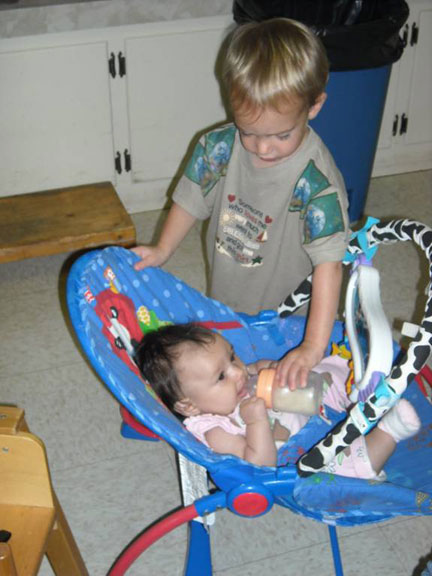
Diapering, another frequent classroom routine, can be an important opportunity for adults to engage with young children, but we found that it also became a significant time for infants and older children to engage with each other (Figure 4).

We found during the period of our research that as the infants aged, they began to initiate being part of daily routines, including hand washing. For example, having observed the toddlers and twos washing their hands in the sink before lunch and snacks each day, one of the infants spontaneously crawled to the sink. The teachers assisted her in washing her hands and carried her to her chair. This pattern continued until this infant became steady on her feet and walked to her chair unassisted.
We found that having transparent gates and barriers was another key factor in the children’s relationships; infants and older children often spent time at the barriers observing each other. Infants frequently watched the play of toddlers from the gate and from the infant loft area (Figures 5 & 6). The toddlers and 2-year-olds also observed the infants; this mutual observation seemed to lead to strong connections between the infants and older children. Infants, toddlers, and 2-year-olds interacted by exchanging smiles, laughs, touches, and toys through the slats of the gate and the loft.

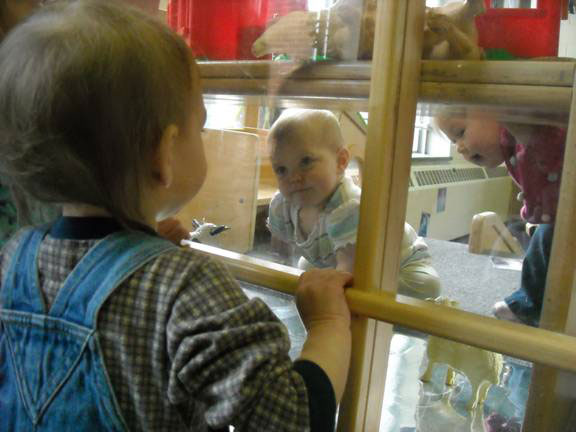
Figures 5 & 6. Children observe each other through transparent barriers.
Play with Infant Materials and Doll Play
We also noted that classroom materials were important for facilitating relationships between the infants and the older children. In particular, the toddlers and 2-year-olds sought opportunities for doll play and engagement with materials they were seeing infants use. They frequently wanted to play with toys and other materials that were present in the infant area. We accommodated this interest by having older children visit the infant area individually or in small groups. One of our younger toddlers, for example, frequently went to the infant rocking chair, which had been one of her favorite places when she was an infant (Figures 7 & 8). Her exploration of the rocker seemed to us to express a desire or need to revisit her own infancy in light of the presence of new babies in the room and her own transition to toddlerhood.
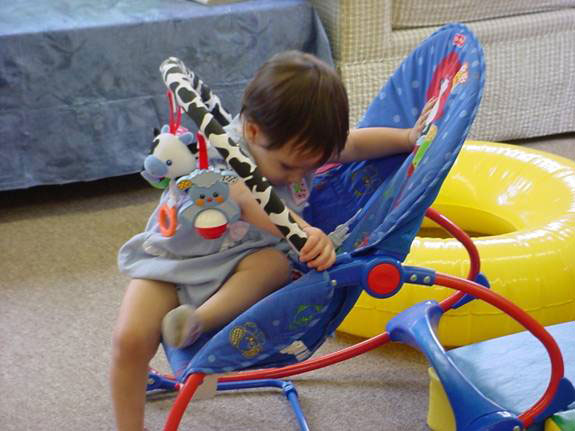

Figures 7 & 8. A toddler explores an infant rocking chair.
In response to the interests of this particular child and the other young toddlers, the teachers also brought materials from the infant area to other parts of the room, allowing the toddlers to use infant toys while engaging in pretend play.
We also added dolls and other materials to support doll play in the toddler and 2-year-old classroom. We subsequently observed that the children often imitated the interactions they observed between infants and adults in the classroom. We also noted the care with which they handled their dolls, much the same as adults used in caring for the infants. For example, children would undress, bathe, diaper, and swaddle the dolls, feed them, and read to them (Figures 9-11). They also engaged in other caregiving behaviors that they had observed, such as comforting, rocking, and singing to the dolls.
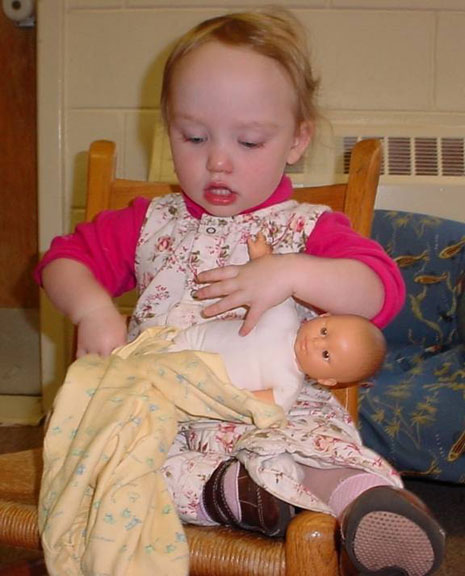
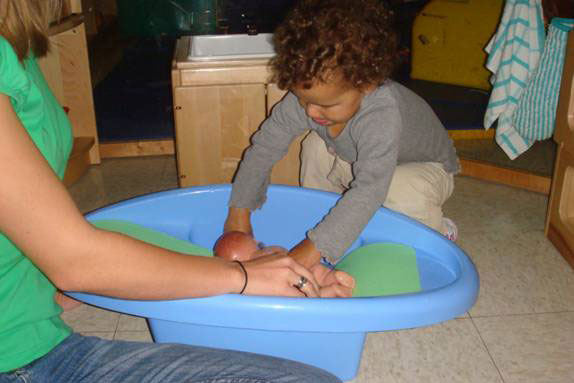
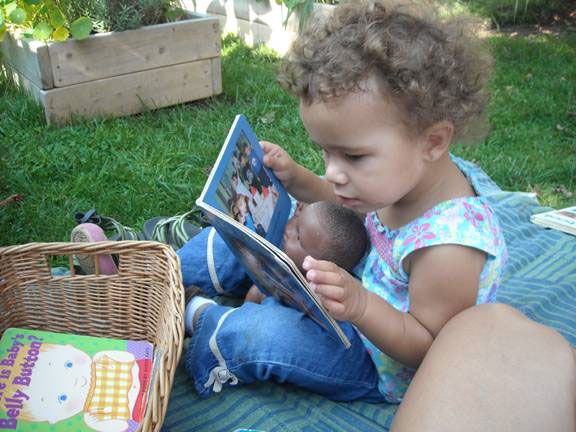
Figures 9-11. Children sometimes imitated caregiving routines with dolls.
Caregiving Assistance
The teachers became increasingly sensitive to the desire of the older children to assist in the caregiving of the younger children. Some children would seek out caregiving opportunities on their own, while others would spontaneously offer to help when they observed adults engaged in such activities. Caregiving assistance included comforting children who were crying, holding infants (with adult support), bringing toys or other materials to younger children, assisting with feeding or with diapering, helping to remove and put on the infants’ clothing, and rubbing backs for children who were going to sleep.
We perceived a richness in these activities; the toddlers’ and 2-year-olds’ strong sense of empathy and caring for peers that began with caring for the infants was soon extended to agemates. Some children were exceptionally helpful to others and often assumed “teacher-like” roles in caring for the other children of all ages in the classroom (Figures 12 & 13).
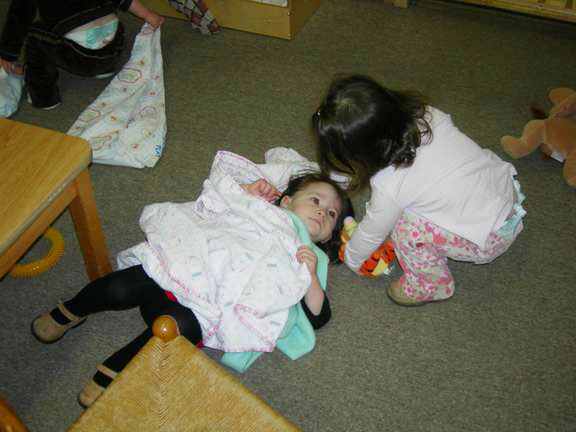

Figures 12 & 13. Some of the children imitated caregiving routines with agemates.
A particularly rich example of interaction was observed between Allen and Janie, two children who did not know each other prior to entering our program. When 3-month-old Allen began attending, 2-year-old Janie sought out opportunities to be near him. Allen’s teacher helped Janie to hold Allen by placing him on Janie’s lap and supporting his back and neck. This proved to be a powerful moment that set the stage for Janie’s desire to frequently interact with “baby Allen.” Over time, Janie began to ask for gloves so that she could help change Allen’s diaper. (She helped by standing on a stool near the changing table and talking to Allen while the teacher changed the diaper.) Janie also expressed a desire to sit near Allen during mealtimes so she could assist in feeding him bottles and baby food. We noticed that just as Janie had a strong desire to care for Allen, all the other toddlers and 2-year-olds also wanted to participate in caregiving with the infants when they were together (Figures 14 & 15).
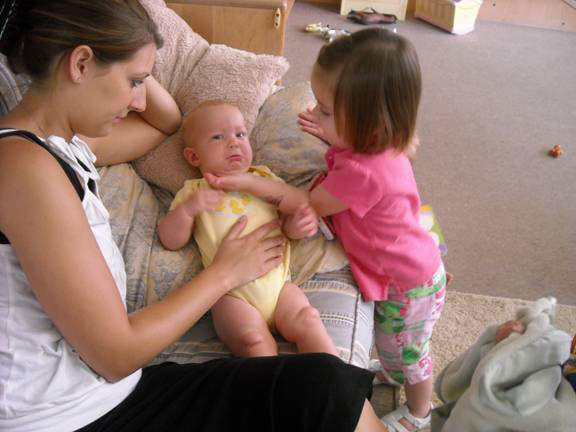

Figures 14 & 15. Children participated in caregiving routines with infants.
Planned Opportunities
As we noticed the powerful connections that were emerging among the children, we began to plan specific ways to support their expression. This involved more active creation of opportunities for the infants and older children to be in the same space at the same time. Our strategies included putting together small mixed-age groupings of two or three children by having infants visit the older children and vice versa (Figure 16), having the infants and older children on the playground at the same time, taking the children on walks together, and having small groups of children together outside the classroom—both indoors and outdoors, depending on the weather and the planned activity (Figure 17).

Figure 16. Infants and older children participated together in experiences planned by the teachers.
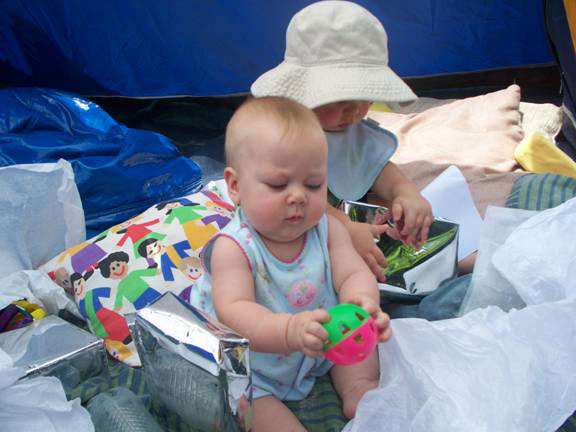
Figure 17. An infant and a toddler sat together during one of the planned outdoor experiences.
As we planned these opportunities, we carefully considered what types of materials and situations best supported interaction between the infants and toddlers. Through reflection on our observations individually and as a group, we identified several considerations that were important in planning for these experiences.
First, we noted that the more open-ended materials were optimal for facilitating interaction between age groupings; paint, water, boxes, and similar materials especially allowed children at a range of developmental levels to participate (Figure 18).

Figure 18. Paint was one of the materials that facilitated interactions between infants and toddlers.
We also observed that toddlers were interested in “real-world” materials and wanted to use those materials rather than toy items. For example, they preferred to use real baby bottles rather than toy bottles when feeding their dolls. They were able to distinguish between play and real materials, and they would choose the real items.
Adult participation and its management were also critical to supporting the interactions that developed between infants and the older children. The adults involved worked to overcome their fears about the older children harming the younger ones, and they carefully supervised these interactions. Over time, the adults noted that as the older children learned more about caregiving, their presence with the infants was often helpful, especially if two infants were crying at the same time (Figure 19).
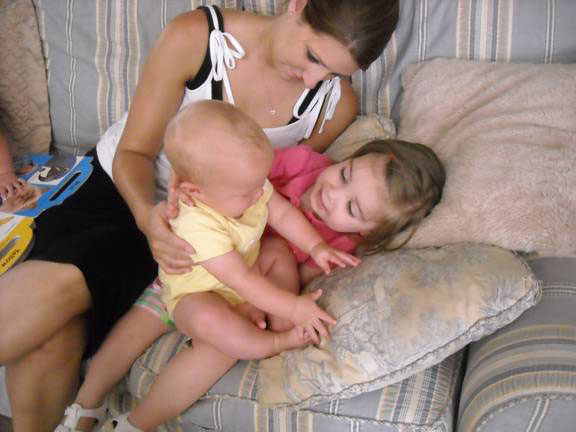
Figure 19. An adult supports a child holding an infant.
Careful selection of which children were together also proved to be an important consideration, especially with regard to the kind of adult supervision needed. The oldest children tended to need less direct, hands-on modeling and supervision than the young toddlers did, especially as their interactions with the infants increased (Figure 20). Modeling of desired behaviors and hand-over-hand guidance were central in teaching the children about appropriate levels of touch. We were, however, continually amazed at the sensitivity and the gentleness that the older children used with the infants.
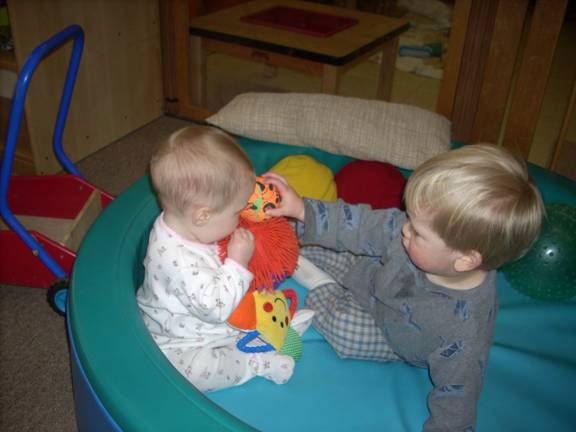
Figure 20. Older children learned to interact gently with the infants in a variety of situations.
Another consideration in planning opportunities for infants and toddlers to spend time together was the fact that the infants reciprocated the attentions of the older children—making eye contact with toddlers, returning their smiles, making gestures, reaching, and making sounds to communicate. We noted that while attention span and interest differed among the older children, they all displayed some desire for opportunities for social contact with the infants.
We found that an unanticipated benefit of encouraging cross-age interaction was that the toddlers and 2-year-olds began to seek out and engage more frequently with their classmate who had a disability. We surmised that interacting with the infants had helped them to develop observational skills that allowed them to assess their classmates’ needs and emotions. As they learned patience with the infants, they seemed to transfer this patience into their interactions with both this child and each other. Their frequent contacts with the infants thus enabled our older children to create a more inclusive classroom.
Spontaneous Interactions
As time went on, we noted that the infants and the older children began to spontaneously interact with each other in a variety of ways, without adult support. Children in both groups increasingly watched each other across the transparent barriers and more frequently responded to being watched. When either the younger or the older children were watching across the gate, those who were being watched would come to the gate and gaze, converse, or (when they were tall enough to reach across the gate) touch the watchers on the other side.
We also saw that when placed in the same area, infants and older children increasingly interacted without adult prompting. Although adults were present to offer words and interpretations of other children’s actions and intents, the children showed an ability to engage independently that amazed the teachers (Figure 21). For example, older children would often approach a nonmobile infant and communicate by gazing, touching, or talking.
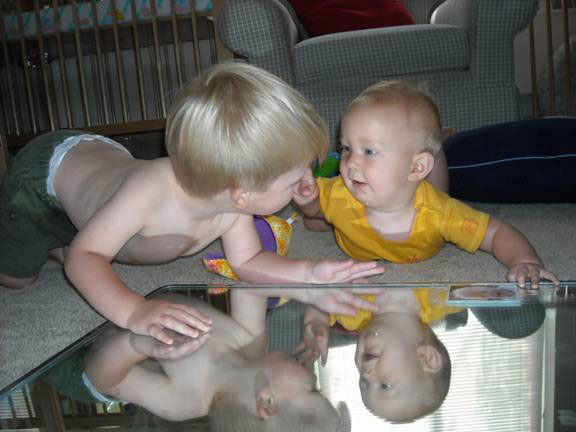
Figure 21. Toddlers and infants increasingly communicated spontaneously through touch and gaze in a variety of situations.
We observed that the older children also often brought materials to the infants without prompting. If an infant “lost” a toy, for example, an older child would pick it up and return it to the infant. Mutual exploration of toys also became a common way for the infants, toddlers, and 2-year-olds to interact. When one of the children would discover a new feature of a toy, the other children took turns imitating that child’s exploration (Figure 22).
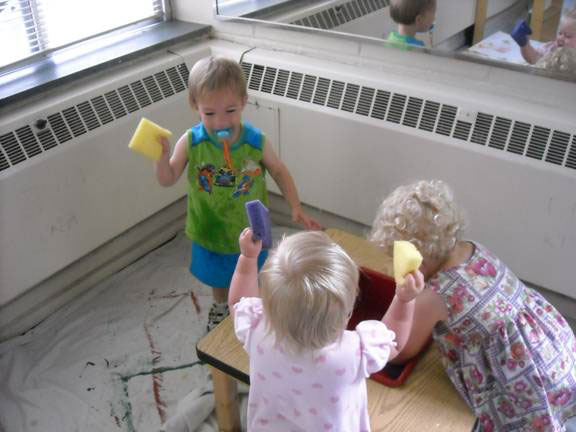
Figure 22. Infants and toddlers explored toys together.
It became evident that older children were beginning to adjust their play to the developmental levels of the infants. For example, as infants started to become more mobile (i.e., able to creep and crawl), games of chase with the older children emerged. Children who had been walking for some time would change their behaviors to be more like those of the younger children, crawling when playing games of chase or hide and seek with infants (Figures 23 & 24).
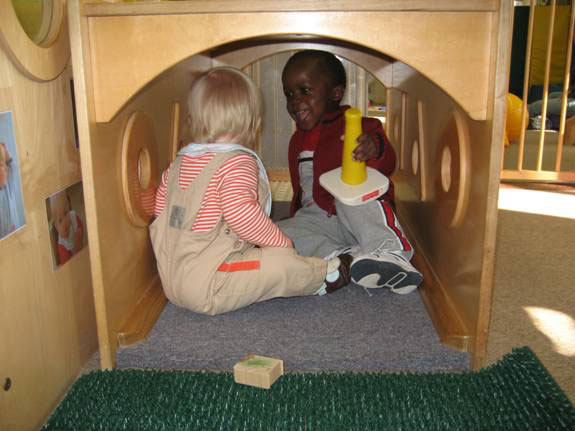
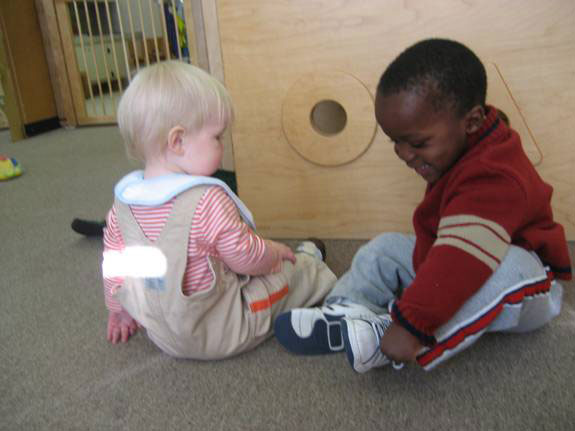
Figures 23 and 24. Older children sometimes adjusted their behaviors in order to play with infants.
We also found that older children not only imitated behaviors of the caregivers, they also spontaneously expanded on those behaviors. For example, caregivers did not swaddle any of the infants, but the toddlers were repeatedly observed swaddling dolls while playing.
Older and younger children would often have brief interactions, but we noted that over time it was evident that the same children kept seeking out one another. For example, at first, Janie initiated interactions with Allen; as he got older, Allen would reciprocate by pursuing opportunities for contact with Janie. Other children often expressed their affection for each other through hugs and kisses (Figure 25).
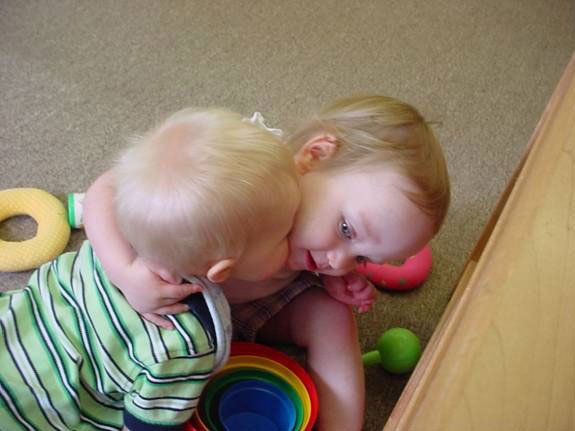
Figure 25. Infants and older children sometimes responded to each other with kisses and hugs.
Lessons Learned: Impact on Our Practices
Because our infant and toddler classrooms shared one larger space and the physical barriers between them were transparent, our environment already had the potential to support infants’ and older children’s observations of and contacts with each other. Nevertheless, the quality of the relationships that developed and the learning that occurred resulted in large part from the fact that teachers learned to trust the toddlers to be careful and helpful in their interactions with the infants. We began this study with serious concerns about the children’s ability to interact with each other safely. These concerns proved to be the biggest obstacle for us to overcome; we began to see that we could be, or had been, barriers to this relationship-building process. The teachers actively strove to view the toddlers as capable and competent individuals who could and would serve as helpers and role models to the infants and each other. Letting go of our own misconceptions and fears enabled us to discover that with appropriate guidance and support from adults, the toddlers in our classroom, instead of being “too rough” with infants, were able to be effective helpers in caring for and playing positively and supportively with them (Figure 26). We found that appropriate guidance and support included modeling of desired behaviors, providing direct instruction in “gentle touch” and caregiving skills (e.g., feeding the infants), and helping the toddlers with interactions that they could not have managed on their own, such as holding the infants.
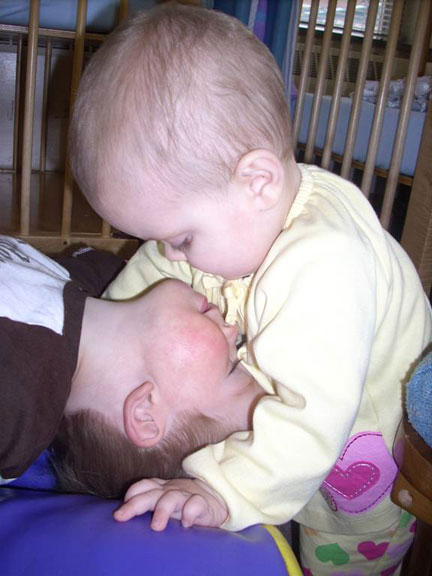
Figure 26. Toddlers and infants interacted safely and playfully.
Our experience suggests that other programs that have physically separate classroom spaces for their infants and their toddlers can still provide opportunities for younger and older children to interact. Establishing routine times to visit other classrooms, creating a shared space for small cross-age groups of children to interact, and holding cross-classroom picnics and other events might facilitate these types of interactions. In addition, older children could be given opportunities to be teachers’ helpers in the infant classrooms.
The use of open-ended materials and experiences proved to be significant in supporting contacts between the infants and toddlers. We increased the frequency of opportunities for such interactions by setting up situations that allowed children of multiple developmental levels to participate. We also discovered that when we provided them with open-ended materials, the children seemed to need less adult support and could direct their own interactions.
We also noted unanticipated benefits in several areas of the curriculum throughout the year. For example, we observed that the children’s relationships seemed to facilitate the transition from the infant classroom to the toddler classroom. Through their interactions with the older children, infants learned behaviors that were part of the routine in our toddler room, such as hand washing and putting their plates away after lunch. In fact, we observed that during the course of our study, some infants began to crawl to the sink for hand washing with the toddlers after meals. In addition, the infants had already established meaningful relationships with the older children, which helped make their transitions to the toddler room seamless. We noted also that infants often “told” us when they were ready for that transition through their continued efforts and desire to spend the majority of their time in the toddler area. Since completing this study, we noticed that some of the preschool-age children in our program also showed a strong interest in “the babies.” In response, we began allowing these children to visit the younger children, which has proven fruitful in helping toddlers make the transition to the preschool classroom as well as in instilling a sense of accomplishment in the older children.
Classroom observation, documentation, and shared reflection were critical to the insights we gained during this study. Our observations support the idea that children between the ages of birth to 3 years are very competent and capable of forming positive relationships with one another. We learned that our own expectations as the adults in the classrooms were critical in influencing the kinds of behavior the infants and toddlers demonstrated as their relationships developed. We challenged ourselves to let go of our own fears about children’s safety, which then allowed more meaningful interactions to occur between infants and toddlers. Our willingness to reexamine our own expectations and to explore the children’s interest in each other enabled us to facilitate and observe the unfolding of caring and nurturing relationships between the children.
These insights in turn made us more purposeful in planning to ensure that we created, recognized, and supported opportunities for infants and toddlers to interact. Support of these relationships remains a critical component of our curriculum, and we plan opportunities daily for infants and toddlers to interact and engage with each other.
As a staff, we continue to reflect on relationships within our center—not only the relationships between the children, but also relationships between children and adults and between the adults. Such reflection has been important in helping us to better understand the barriers between ourselves and others, and the ways in which our expectations color our interactions with others. We have discovered that by being open to new possibilities and appreciating what each person brings, we are able to experience richer interactions and relationships that defy our expectations.
Acknowledgments
Grateful acknowledgment is given to Tracy Seifert for her assistance in compiling pictures for this manuscript. In addition, we would like to thank the teachers who have continued our explorations with the children at Lucy Brock Child Development Lab Program.
References
Field, Tiffany. (1990). Infancy. Cambridge, MA: Harvard University Press.
Field, Tiffany; Gewirtz, Jacob L.; Cohen, Debra; Garcia, Robert; Greenberg, Reena; & Collins, Kerry. (1984). Leave-takings and reunions of infants, toddlers, preschoolers, and their parents. Child Development, 55(2), 628-635.
Franco, Fabia; Perucchini, Paola; & March, Barbara. (2009). Is infant initiation of joint attention by pointing affected by type of interaction? Social Development, 18(1), 51-76.
Gandini, Lella. (2001). Reggio Emilia: Experiencing life in an infant-toddler center: Interview with Cristina Bondavalli. In Lella Gandini & Carolyn Pope Edwards (Eds.), Bambini: The Italian approach to infant/toddler care (pp. 55-66). New York: Teachers College Press.
Gandini, Lella, & Goldhaber, Jeanne. (2001). Two reflections about documentation. In Lella Gandini & Carolyn Pope Edwards (Eds.), Bambini: The Italian approach to infant/toddler care (pp. 124-145). New York: Teachers College Press.
Gandini, Lella; Hill, Lynn T.; Cadwell, Louise B.; & Schwall, Charles (Eds.). (2005). In the spirit of the studio: Learning from the atelier of Reggio Emilia. New York: Teachers College Press.
Mills, Geoffrey E. (2000). Action research: A guide for the teacher researcher. Upper Saddle River, NJ: Prentice Hall.
NICHD Early Child Care Research Network (Ed.). (2005). Child care and child development: Results from the NICHD study of early child care and youth development. New York: Guilford Press.
Rinaldi, Carlina. (2001). Reggio Emilia: The image of the child and the child's environment as a fundamental principle. In Lella Gandini & Carolyn Pope Edwards (Eds.), Bambini: The Italian approach to infant/toddler care (pp. 49-54). New York: Teachers College Press.
Rubin, Kenneth H.; Bukowski, William M.; & Parker, Jeffrey G. (1998). Peer interactions, relationships, and groups. In William Damon (Series Ed.) & Nancy Eisenberg (Vol. Ed.), Handbook of child psychology: Vol. 3. Social, emotional and personality development (5th ed., pp. 619-700). New York: Wiley.
Williams, Shannon Tierny; Mastergeorge, Ann M.; & Ontai, Lenna L. (2010). Caregiver involvement in infant peer interactions: Scaffolding in a social context. Early Childhood Research Quarterly, 25(2), 251-266.
Williams, Shannon T.; Ontai, Lenna L.; & Mastergeorge, Ann M. (2007). Reformulating infant and toddler social competence with peers. Infant Behavior and Development, 30(2), 353-365.
Williams, Shannon Tierny; Ontai, Lenna L.; & Mastergeorge, Ann M. (2010). The development of peer interaction in infancy: Exploring the dyadic processes. Social Development, 19(2), 348-368.
Author Information
Cindy McGaha, Ph.D., is an associate professor in the Department of Family and Consumer Sciences at Appalachian State University. She also serves as the curriculum coordinator for the Lucy Brock Child Development Laboratory Program, located on the campus of Appalachian State University. Her research interests include teacher education, social and emotional development in classroom settings, and development of children with disabilities.
Cindy McGaha, Ph.D.
Family and Consumer Sciences
Appalachian State University
ASU Box 32056
Boone, NC 28608
Telephone: 828-262-2632
Email: mcgahac@appstate.edu
Rebekah Cummings, Ph.D., is an adjunct professor at Appalachian State University. Her interests include the intersection between theory and practice, program implementation, and social-constructivist teaching and learning.
Barbara Lippard, B.S., resides in Durham, North Carolina, and is a former teacher at Lucy Brock Child Development Laboratory Program. Her interests include early childhood special education and supporting infant-toddler development.
Karen Dallas, B.S., is a prekindergarten teacher in Watauga County Schools, North Carolina, and a former teacher at Lucy Brock Child Development Laboratory Program. She continues to implement and research the Project Approach to learning.

